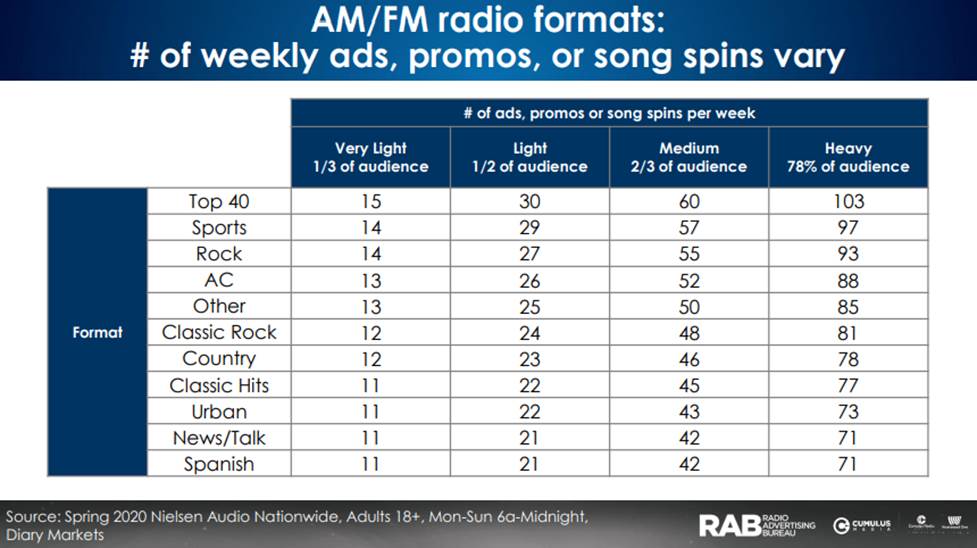
Weekly Spot Scheduling
To better articulate the number of weekly spots an advertiser should run during their campaign depends on understanding the advertiser’s goals and what is important for them to achieve during their campaign. There are four levels of radio campaign scenarios. Each deliver various results contingent on the campaign goal.
Very light and light schedules are ideal for maintaining a campaign message with low reach and frequency - general awareness. Medium schedules are ideal for promotional campaigns, seasonal products, or general sales events. A heavy schedule can be used for a major sales event, grand opening, or a product launch where the advertiser wants to reach the most amount of people.
For each level, the number of weekly ads needed vary, based on Nielsen reach and frequency reports (on a typical radio station in a diary market) include:
- Very light
- Reach: 34% of station’s audience
- Frequency: 1.4 times
- 12 ads needed
- Light
- Reach: 50% of station’s audience
- Frequency: 2 times
- 25 ads needed
- Medium
- Reach: 66% of station’s audience
- Frequency: 3 times
- 49 ads needed
- Heavy
- Reach: 78% of station’s audience
- Frequency: 4.3 times
- 83 ads needed
To calculate how many spots advertisers should run on a particular radio station is based on the individual radio station’s turnover rate: Station Cume ÷ Average Quarter-Hour Persons = Station Turnover
The turnover ratio signifies the number of different people reached by a station weekly. A higher turnover rate means the audience spends a shorter time listening and a lower turnover rate means the audience spends a longer time listening. It is helpful to understand how many ads or promotional messages are needed to reach a station’s listening audience.
With the station turnover rate in hand, determine the number of spots an advertiser should run in one week, on that particular station when creating a Monday-Sunday 6AM-12AM schedule.
- Very light
- 1/2 of radio station’s turnover rate
- Light
- Radio station’s turnover rate
- Medium
- Double radio station’s turnover rate
- Heavy
- Multiple radio station’s turnover rate by 3.4
According to Nielsen, the number of weekly spots needed for the four levels on reach vary based on a radio station’s format.

For additional information or how to calculate in a PPM market, click here.
Source: Radio Advertising Bureau, CUMULUS MEDIA | Westwood One, How Many Ads Should a Radio Station Run to Get Results, 2020
RAB | 800-232-3131 | www.RAB.com